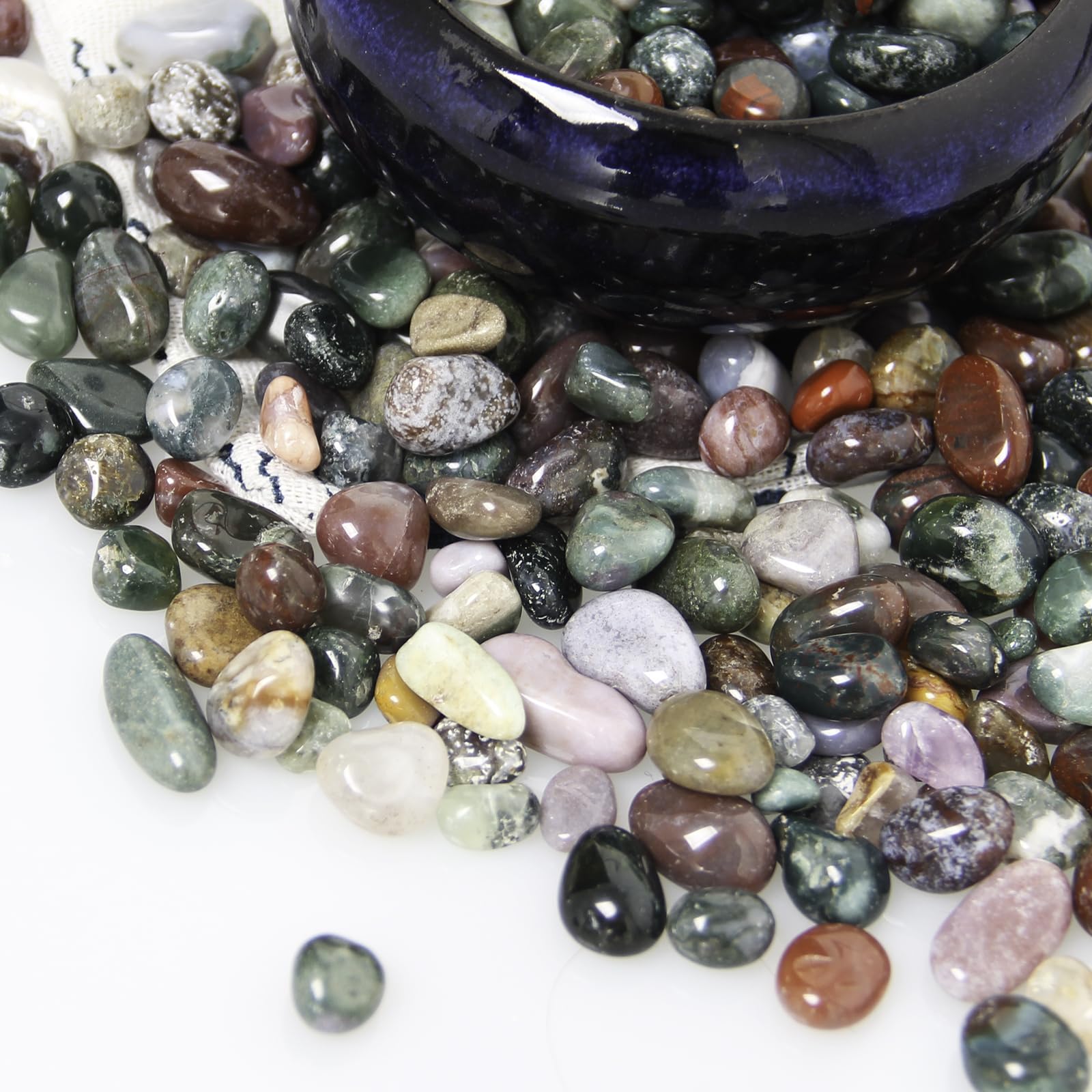
Creating a Witch's Garden: A Guide to Magical Herb Cultivation
Learn to cultivate a witch's garden that serves as a sanctuary for both botanical growth and spiritual enrichment. This guide covers site selection, plant symbolism, and integrating rituals to create a harmonious space.
Establishing a witch's garden offers a unique opportunity to connect deeply with nature and infuse your surroundings with mystical energies. By dedicating a space to plants and herbs that resonate with magical properties, you create a sanctuary for both personal growth and spiritual practices.
Key Takeaways
- A witch's garden serves as a space for ritualistic practice and communion with nature.
- Selecting the right location and plants is crucial for aligning with natural energies.
- The garden fosters both spiritual and botanical growth.
Choosing the Ideal Location

Selecting the perfect spot for your witch's garden is the first step in harmonizing human intention with nature's energy, creating a vibrant environment conducive to magic and growth.
Understanding the Importance of Location
A witch's garden requires a space where plants receive ample sunlight—ideally six to eight hours daily—and the soil is rich in organic matter with adequate drainage. This combination ensures that magical herbs and plants thrive, embodying the energies you wish to cultivate.
Creating an Urban Sanctuary
For urban dwellers, a witch's garden can be a sacred retreat amidst the concrete landscape. Even a small balcony or rooftop corner can become a haven for plants and positive energy. The key is to create a tranquil space that feels secluded from the city's hustle, allowing nature to flourish.
Considering Privacy and Space
Privacy is essential in a witch's garden, providing a safe space for rituals and personal energy work. If space is limited, vertical gardening techniques, hanging plants, and shelves can maximize the area. Natural material privacy screens can also help create a serene environment for your magical botanical endeavors.
Designing Your Witch's Garden
Crafting a witch's garden is a sacred process that blends practical gardening with mystical principles, resulting in a space that is both spiritually significant and aesthetically pleasing.
Incorporating Magical Elements

Integrate the four elements—Earth, Air, Fire, and Water—into your garden design to enhance its magical essence.
- Earth: Place stones and crystals to amplify grounding energy.
- Air: Use wind chimes or feathery plants to represent air currents.
- Fire: Add a small fire pit or candles to introduce warmth and light.
- Water: Include a birdbath or water feature to facilitate the flow of water energy.
Defining sacred spaces, such as a pentagram, can create a powerful magical circle where these elements converge.
Planning for Growth and Harvest
A well thought-out design ensures continuous growth and abundant harvests. Planting in phases, considering each plant's life cycle and peak growth periods, maintains energy balance and allows for regular harvesting without depleting the garden's vitality. Understanding the magical properties and optimal harvest times of each herb and plant aligns your spellwork and rituals with nature's rhythms.
Utilizing Altars and Garden Beds
Altars and planting beds are focal points in a witch's garden. Raised garden beds can be arranged in aesthetically pleasing designs that honor the garden's overall structure. Altars, often placed at the center or cardinal points, serve as spaces for daily rituals, seasonal celebrations, meditation, or magical practice. Aligning altars with natural growth fosters harmony between your intentions and the living environment.
Selecting Herbs and Plants for Your Garden
A witch's garden is a sanctuary of plants with magical properties and practical uses, where each selection reflects both purpose and passion.
Choosing Medicinal and Culinary Herbs
Incorporate herbs that serve both medicinal and culinary purposes.
| Herb | Medicinal Use | Culinary Use |
|---|---|---|
| Basil | Immune support, antibacterial | Versatile in cooking |
| Mint | Aids digestion | Flavoring in dishes and teas (plant in pots to control growth) |
Focusing on Edible Flowers and Plants
Edible flowers add flavor and visual appeal to your culinary creations.
| Plant | Flavor Profile | Culinary Use |
|---|---|---|
| Calendula | Peppery | Salads, soups, teas |
| Violets | Floral | Desserts, salads, garnishes |
Highlighting Aromatic Healing Plants
Aromatic plants offer sensory delight and healing properties.
| Plant | Medicinal Use | Aromatic Benefit |
|---|---|---|
| Lavender | Promotes relaxation | Calming scent |
| Chamomile | Induces sleep, reduces anxiety | Soothing aroma |
Incorporating Rituals and Witchcraft
Beyond its botanical beauty, a witch's garden is a sacred space where rituals and witchcraft harmonize with the environment.
Utilizing Tools and Symbols
Enhance your garden's magical atmosphere by incorporating tools and symbols.
- Pentagrams: Represent the five elements—earth, air, fire, water, and spirit—and offer protection.
- Crystals: Place strategically to interact with the vibrational energy of the plants.
Creating Spaces for Offerings and Rituals
Designate specific areas within your garden for rituals and offerings to connect deeply with the earth's energy. An elemental garden, featuring representations of natural elements, can serve as an altar to attract positive energy and facilitate powerful magical work.
Aligning with Moon Cycles and Astrological Signs
Timing your gardening activities and rituals with lunar phases and astrological signs can enhance their effectiveness.
- Full Moon: A time of peak magical power, ideal for rituals and harvesting.
- Astrological Signs: Each sign influences specific aspects of life and growth. For example, planting during a water sign like Cancer may promote nurturing and emotional development in your garden.
By synchronizing your planting and harvesting with these cosmic rhythms, you ground your magical practices within the natural ebb and flow of the universe.
Magical Plants and Their Symbolism

Designing a witch's garden involves understanding the esoteric symbolism of plants, as each possesses unique energies that can enhance your magical work.
- Lavender: Associated with love and sleep, it induces peaceful slumber and aids in dream work.
- Sage: A staple in protection rituals, it offers spiritual cleansing and guards against negative influences.
Selecting and arranging plants with intention brings a harmonious balance of magical energies into your garden.
Connecting with Nature Spirits
A witch's garden invites nature spirits to interact with the enchanted space.
- Trees: Serve as portals for these spirits, strengthening your relationship with the natural world.
- Flowers: Attract positive energies and foster an atmosphere of creativity and joy.
Choosing plants that align with specific entities can enhance your focus and create an oasis of positivity.
Planting for Protection and Prosperity
Intentional selection and placement of plants can attract prosperity and provide protection.
- Basil: Attributed with qualities that attract wealth; planting it near your home's entrance can invite abundance.
- Rosemary: Believed to promote mental clarity and concentration; placing it in the garden can protect against negative energies.
By thoughtfully arranging these plants, your garden becomes both a magnet for good fortune and a shield against adversity.
Cultivating a Witch's Herb Garden
Creating a witch's herb garden is a mystical act that aligns with nature and the unique properties of each herb.
Emphasizing Traditional Witch's Herbs
A classic witch's herb garden includes plants steeped in magical history.
- Rosemary: Used for protection and purification.
- Sage: Known for wisdom and cleansing.
- Basil: Associated with wealth and love.
- Mint: Valued for energy and digestive benefits.
- Lavender: Promotes peace and rest.
- Chamomile: Symbolizes calm and wellness.
Including these herbs reflects the balance of light and shadow in witchcraft.
Exploring Historical Uses and Meanings
Each herb in a witch's garden carries significant symbolic meaning and practical uses.
- Comfrey: Known for its skin-healing properties.
- Henbane and Belladonna: Historically used in small amounts for their hallucinogenic effects during ancient ceremonies (caution: these are toxic and should be handled with care).
- Yarrow: Believed to stop bleeding; often carried by soldiers.
- Calendula: Associated with comfort and heart's ease.
- Thyme: Burned for purification and attracting good health.
Respecting the historical uses of these plants deepens your connection with the natural world and enhances the mystical presence in your garden.
Harvesting and Appreciating Your Garden's Bounty
A witch's garden offers natural beauty and magical power. The way you harvest and preserve its bounty impacts their effectiveness in both culinary and magical practices.
Harvesting Herbs and Flowers at Their Peak

Gather herbs and flowers at the right moment to maximize their vitality.
- Basil: Harvest just before the plant blooms, cutting at knee-height.
- Chamomile: Collect fully opened blossoms.
- Lavender: Cut when the flowers are just beginning to open.
Harvesting in the morning, after the dew has evaporated but before the sun is at its peak, ensures the plants are at their most potent.
Drying and Storing for Magical and Culinary Use
Proper preparation preserves the integrity of your herbs and flowers.
- Gently wash to remove insects or dirt.
- Carefully dry without crushing the delicate leaves and petals.
- Tie herbs into small bundles and hang them upside down in a warm, dry, dark place with good airflow. For flowers, lay them flat on a surface covered with cheesecloth to maintain their shape.
- Store dried herbs and flowers in airtight containers, labeled with the harvest date; dark glass jars are preferable to protect against light damage.
Following these steps allows you to expand your magical and culinary repertoire with the potent gifts from your witch's garden, each herb and flower bearing the sacred energy of the bloom and the loving intent of the seed blessing.




 https://witchyhour.com
https://witchyhour.com